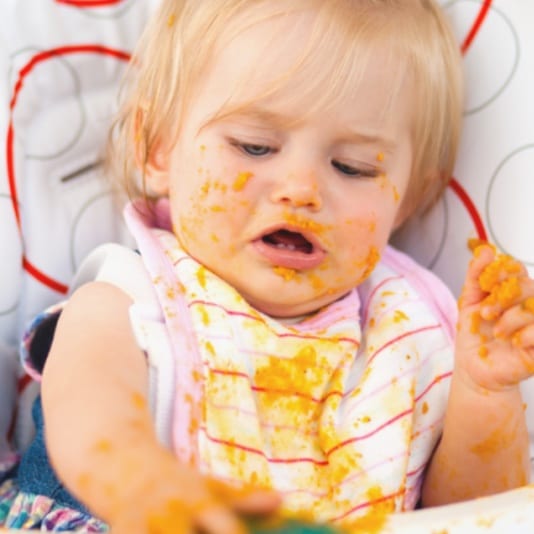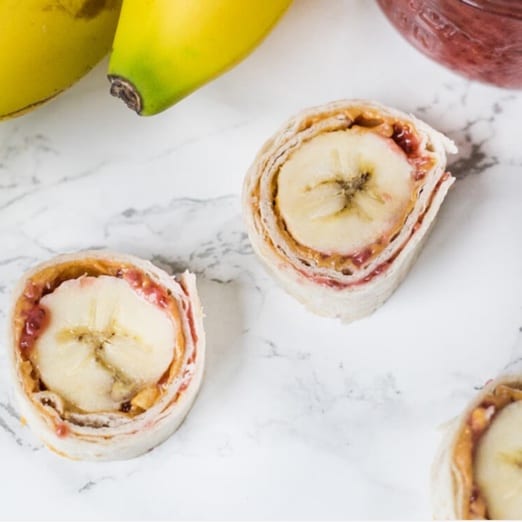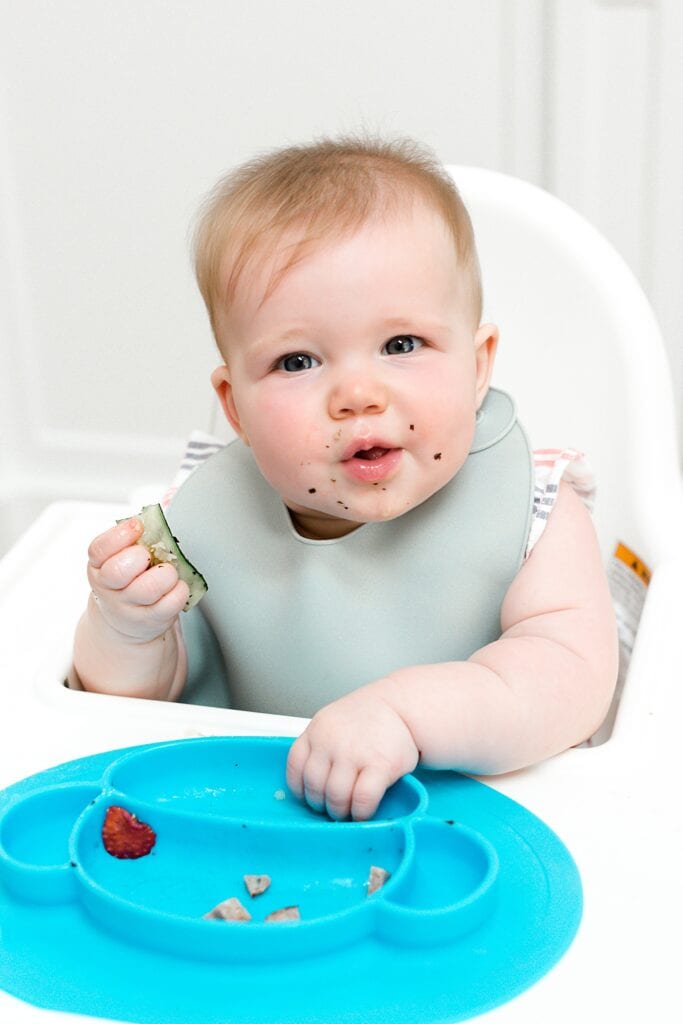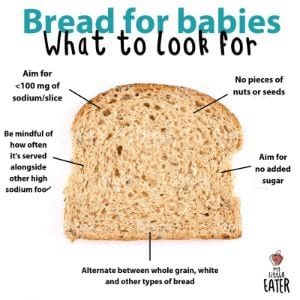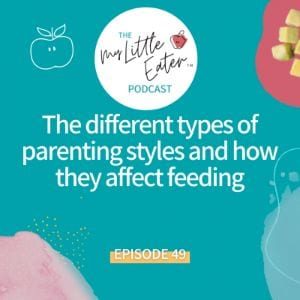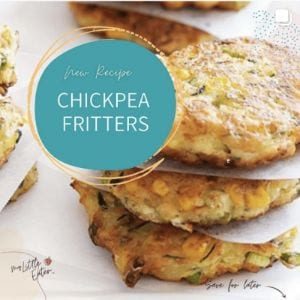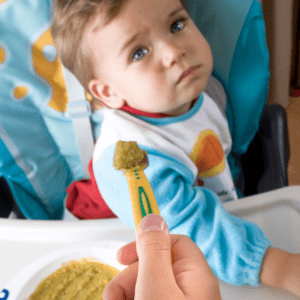
I’m sure you’ve seen a toddler, or older child, that refuses to eat their vegetables. Heck it’s pretty likely that your child refuses them! It’s such a common struggle that parents have. So much so that there’s actually a market out there for teaching parents how to hide veggies in various foods so their kids never even know they ate them! From cookbooks to blogs, even just taking a scroll through Pinterest, you’ll see tons of recipes for this exact reason. And us parents wear it like a badge of honour – “I got my child to eat one whole serving of veggies by blending them up into their mac and cheese – they had NO idea!”
Here’s the thing… I want your child to eat veggies too. But I don’t want you to have to trick them into it. The idea of a “hidden” veggie recipe to me just makes it seem like the point is to make sure your kid never finds out about the veggies, as opposed to actually just adding the veggies to recipes for additional nutrition. Go ahead and add veggies to smoothies, desserts, mac and cheese – whatever you can/want to! But let’s talk about how to do this in a way that will actually encourage your child to learn to like veggies, so you don’t have to keep packing them into random foods if you don’t want to.
THE CONS TO HIDING VEGGIES IN FOOD
Let’s first discuss what I mean by “hiding”. I’m not talking about adding veggies to recipes for added nutrition, or loading up your spaghetti sauce with various types of vegetables to clean out your fridge. I’m talking about when we knowingly add vegetables to recipes that will disguise their flavour so that they can’t be detected through sight or taste, AND failing to tell your child about the veggies.
I’ve provided an example of this in my blog post on my Shrek Muffins. These are banana-spinach muffins. Could this be an example of hiding veggies? Potentially, yes. They do contain a vegetable that’s disguised in the recipe (except for the fact that the muffins are bright green!), so this could qualify. The reason that I don’t consider it to be hiding veggies, but is actually just mixing veggies in, is because when my boys asked me what was in them, and when they offered to help make them, I didn’t hide the spinach. I told them the muffins had spinach in them – that’s the difference. Had I lied about that, well then, I would have been hiding the veggies.
Now that we’re clear on what I mean when I say “hiding”, let’s talk about what the downsides are to this approach…
#1: It can build a sense of distrust
Lying is always going to lead to distrust in a relationship, and your relationship with your toddler is no different. If you sneak in food that they don’t know is there, and then later find out that dreaded spinach was in fact in their favourite sauce, that trust in feeding is now broken. The chances that your child will see this as a positive feeding experience (even if they really couldn’t taste the spinach), is slim. Instead, they’ll relate it with “that time mom lied about what was in the food” and then, what’s worse is, it can lead to suspicion of other food down the road. You just might find yourself with a toddler, or older child, who now questions things that were previously their favourite. They may be nervous to try new food because maybe they’re used to you sneaking something else into it that they don’t like.
In short, you could end up with a much bigger issue than a child that’s still learning to like vegetables.
#2: It doesn’t teach kids to like veggies
If your child is never seeing a real vegetable on their plate, and they’re constantly just blended up into various foods, they can’t learn to like them. They can’t like what they’re not exposed to (or what they can’t taste)! This means that even after years of blending spinach into muffins or beets into cake, you could serve them the real thing and still be met with the same refusal to eat it as you were years ago.
As graduates of my Feeding Toddlers course know, whole food exposures are key! Your child needs to be aware of them, interact with them, and actually taste them, to eventually learn to like them. None of that happens if your child has no idea the veggies are there.
#3: It makes veggies “special”
Again, if you’ve seen some of my other content, you’ve probably heard me talk about keeping sweets and desserts on a level playing field with all other food. We don’t want desserts to be put up on a pedestal so they’re considered something special that needs to be earned and obsessed over. The same goes for veggies (and really all food!). We want all food on a level playing field, nothing is considered good or bad, or better than another.
If we hide veggies in food, that’s either showing them that veggies are superior – they’re so healthy we have to find ways to add them to everything! Or, it makes veggies the “bad guy” – it’s a chore to eat them, no one likes them, so we just hide them in things so you know you ate some.
#4: It doesn’t teach kids that veggies are a normal part of a meal
I always recommend serving produce alongside every meal, whether that be veggies or fruit. Now, aside from the nutritional benefits, the bigger reason is so that kids become accustomed to seeing veggies present at most, if not every, meal. So that question of “Eww…what is this? Why is this here?” will eventually just become neutrality at worst…and with daily exposure…liking it at best. This is part of my long term strategy to teach kids to like veggies. We don’t get stuck in short-term band aid solutions here at MLE!
SO WHAT DO I RECOMMEND INSTEAD?
Involve your toddler in making the “hidden” veggie recipe!
If you want to blend up some carrots to add to your mac and cheese sauce because you like the nutrition boost and the recipe is yummy…absolutely go ahead! But why don’t you try bringing your toddler into the kitchen to help you make it?
There’s no need to make a big deal out of this, treat the recipe like you would any other one. Call out what ingredients you need, and then have them help you go get them all. I speak about this briefly in my post on Shrek muffins, but when my son offered to help bake some, I pulled out the spinach and said “Okay, I need 6 cups of spinach.” And he went “There’s spinach in these?!” But I didn’t make a big deal out of it. I simply said “That’s right.” (or something like that). We don’t want to draw too much attention to it by telling them “You’ll Like it!” “You won’t even taste it!”, etc. We just want to be direct and honest about it. Simply saying: “That’s what the recipe says!”, is a perfect way to acknowledge what they said, but also to avoid an argument about how they think that’s gross, or they don’t want any then, etc.
Now, my boys were always quick to point out that they just wanted “normal muffins” or “normal pizza sauce” or whatever it was that we were cooking. And here’s how I suggest you handle those types of objections, simply say:
“There are so many different recipes in the world, but this is the one we’re making today.”
Short, simple, and to the point. We want to normalize variety in food, and that includes variety in recipes too. True, not all muffins call for spinach, but my Shrek muffins do. Just like not all spaghetti sauce calls for various veggies to be blended right into it, but if that’s how you want to add some extra veggies to spaghetti night dinner, then normalize that recipe. Bringing them into the kitchen to help make it will help you be able to do this, and they’ll soon learn there are veggies in many different recipes, and that is completely normal.
You can check out my podcast episode with Montessori teacher, Adeline Dubreuil, where we discuss how to foster independence in the kitchen, for some tips on ways to get your toddler involved in cooking.
Place whole veggies alongside the hidden veggie recipe
If you can’t get your toddler to join you in the kitchen, but you really want to test out this new hidden veggie recipe you found, or you want to make up one of their favourites, I challenge you to acknowledge the fact that the recipe has veggies in it by serving the whole version alongside the recipe. So, if you blended carrots into the cheese sauce for mac and cheese, serve some carrots beside the noodles on their plate. In this example, of course be mindful that raw carrots are a choking hazard, but you could always roast/steam them first. Just make sure they’re identifiable as carrots, and served safely.
MY FINAL TIP
I know this way isn’t as easy. I know that it may result in more protests at mealtimes, or more food going uneaten (in the short term). But we need to remember that it’s all a learning process…and the learning never happens unless we teach them. Kids need the opportunity to explore veggies with all of their senses in order to learn to like them. It takes many, many exposures in some cases!
Now, I don’t expect you to read out a full ingredient list every time you serve a meal – that’s just not necessary. But, if your child asks you if there’s veggies in something, or they say: “What’s in this mama?”…please tell them the truth. Don’t try to sneak it in under their radar, it’s not worth it in the long run!
If you want a complete step by step guide on how to manage, and even prevent, picky eating – including the classic refusal to eat any veggies – enroll in my Feeding Toddlers online course! I provide you with all of my expert strategies on how to increase exposures, make mealtimes fun and stress-free, and help your toddler get the nutrition they need. Sign up today!


